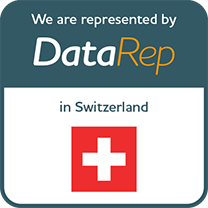The proliferation of new insight tools has prompted massive changes to the research industry and to how organisations harness the power of insight.
This plethora of tools has, understandably, led to an assumption that you can get more for less; you can spend half the time and half the money but get to answers that deliver twice the impact.
On the surface this feels right. Why would you pay an agency to fly halfway around the world to ask what someone in Brazil or China thinks about your product when you can get connected to them within 30 mins from the comfort of your own office? Why would you spend months and thousands of dollars doing fresh quant research when you can mine big data sources to get the answer?
- Half the time? Definitely.
- Half the cost? Almost certainly.
- Twice the impact? Hmmm… That’s where the problems often lie. Undoubtedly, doing something faster and cheaper creates a form of ‘impact’ in a business.
But if we are to really double the impact, then we are talking about something different. We aren’t just talking about the efficiency of gathering the insight, but the quality of the insight. We are talking about finding out something we didn’t know already, that creates incremental growth. And that is frustratingly rare, for 2 key reasons:
#1. Information & Data vs. Insight
These new tools and techniques are genuinely fantastic at gathering, sorting and giving you ready access to data and information. But information and data is not insight.
Finding the latest, most in-demand flavour gets you a useful piece of information. It’s a clue that can help inform your R&D pipeline and, if you are quick to market, no doubt a sales boost. But that doesn’t make it an insight.
We believe that insight is hard. It is rare. It takes time. It takes effort & experience to quickly & skillfully combine multiple different data sources and perspectives to create an insight worth acting on.
#2. The power of humans:
An insight requires context. It requires understanding why the data and information is what it is. If you know the latest in-demand flavour, then chances are your competition does as well… which erodes your competitive advantage.
An insight sure as hell can’t be built without data and information – but it equally sure as hell can’t just be data and information. Data gathering is not enough. ‘Sense making’ is essential.
So, what is the missing link that can turn data and information into insight?
Humans.
Our innate capacity for non-linear thought. Our ability to question the accepted norms and realise when the rules have changed. Our ability to make connections between disparate data sources to form a cohesive and complete picture of why change is happening.
Even the most ardent AI evangelists acknowledge that you can’t delegate that capability to tools yet. Machine learning is a fabulous resource to expedite the process. But it doesn’t – and can’t – replace human thinking.
So what?
The pressures on everyone’s time have increased exponentially in the last 10 years. Insight professionals are no different, with such pressure to deliver the work, that the space to really think and challenge the findings has been frustratingly constrained.
Delivery is important of course, but if the focus is just on delivery, it becomes an in-tray exercise. Efficiency – not impact – becomes the metric of success.
But change is coming. Insight directors are increasingly freeing up their team’s time to shift the needle on impact – taking very different approaches to evaluative vs exploratory work.
Self-serve tools have enabled the more straightforward projects to be outsourced to other internal colleagues or 3rd parties. These projects are more often than not, ones where data and information will provide the answer sought. They are projects where speed and cost are the hallmarks of impact, enabling a faster go-to-market. Efficiency becomes the competitive advantage.
This frees up time to focus on the bigger exploratory projects. Projects where data and information gathering is just the start, not the end. Where ‘sense making’ & thinking becomes crucial to create competitive advantage. Where genuine insight is what makes the difference and human brainpower creates the commercial advantage.
We need to be honest about different types of projects:
We have opportunities now to deliver insight faster, cheaper and with more impact than ever before. But I think we are kidding ourselves if we think we can achieve all 3, all the time. It requires honesty about what we really want to know.
At a conference the other day, an agency was saying that they felt uneasy with a classification between tactical, evaluative pieces of research vs. more strategic.
I’d argue the exact opposite. I’m deeply uneasy if we don’t recognise this truth. Because if we kid ourselves that all projects are born equal, then we fall into the trap of believing we can get the holy trinity of ½ the speed, ½ the cost, and twice the impact on every project. I genuinely don’t believe we can.
Halve the speed & cost, then you can create an increase in impact as measured via efficiency.
But doubling the impact (as measured in terms of new understanding unlocking growth), will only be achieved if we are prepared to invest in the human skills and give them the focus they require.
Reducing costs and times are important, but there is a floor that you can’t go beyond. There is no ceiling to impact. If you are prepared to invest the human capital required, then the rewards are limitless.
Photo by Kelly Sikkema on Unsplash

